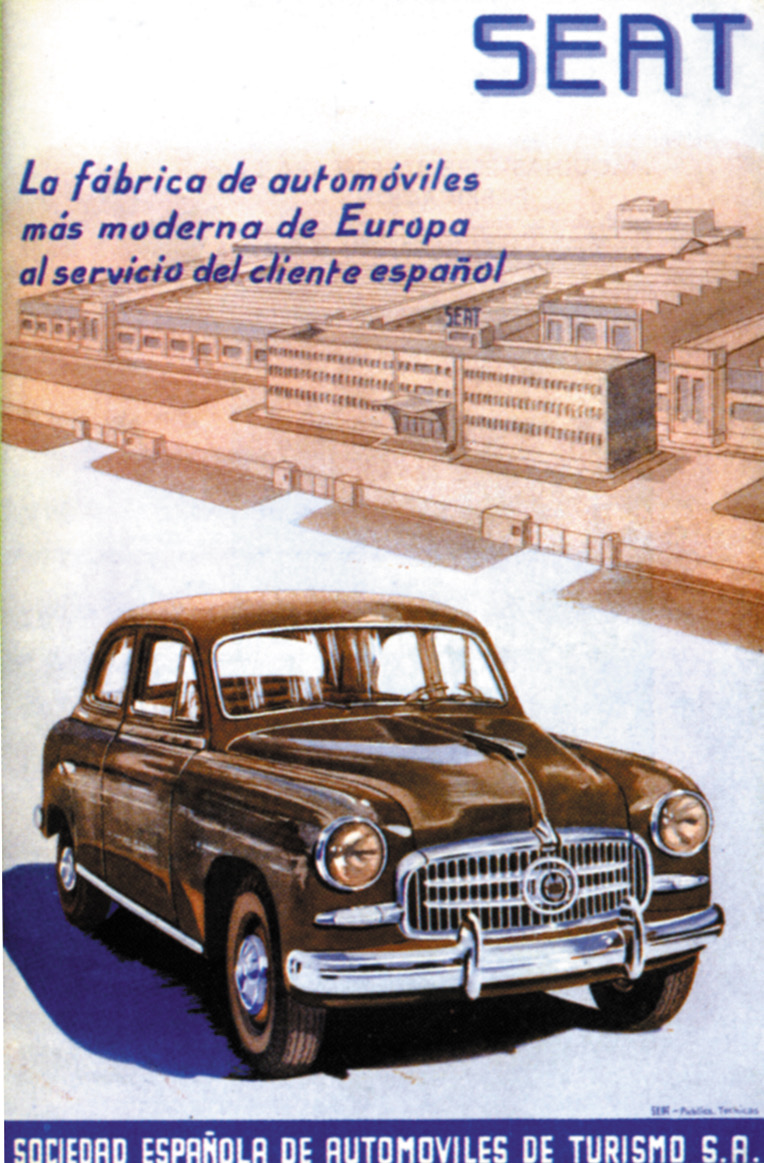Editor’s note: November is Import Month on the ClassicCars.com Journal. Get all the news you could ever need about German, English, French, Italian, Japanese and lots of other cars at our dedicated page.
Although the Spanish automaker SEAT — Sociedad Espanola de Automoviles de Turismo — was established in May 1950, it wasn’t until November 1953 that its first vehicle rolled off a production line. That vehicle, the SEAT 1400, thus celebrates its 65th birthday this month.
“The SEAT 1400, a luxurious and elegant saloon, marked the beginning of the brand’s story and formed the platform for its future success,” the company said in its celebratory anniversary news release.

“The first SEAT 1400 – with registration plate number B-87.223 – rolled off the production line at the brand’s Zona Franca factory in Barcelona on the 13th November 1953, just three years after the brand had been formed.”
The car was the first of nearly 100,000 such 1400 sedans built in the Barcelona assembly plant between 1953 and 1964.
“The technologically advanced SEAT 1400 used an all-enveloping ‘ponton’ body, instead of a separate chassis with the bodywork screwed on — one of the first in Europe,” the company noted.
Those first-year 1400s were priced at 117,000 pesetas, the equivalent of $800.
“Conceived as the vehicle to build the foundations of SEAT’s business, the 1400 was an impressively executed four-door, front engine, rear-wheel drive saloon, equally at home as an official state authority vehicle or providing transportation to the masses as a public taxi,” the news release continued.

Power was supplied by a 1.4-liter four-cylinder engine rated at 44 horsepower.
“The chassis incorporated helical springs that produced an elastic effect on the rear suspension, and longitudinal semi-cantilever springs – which acted as thrust arms – to give it anti-roll stabilization,” the news release said. “A Panhard rod ensured the lateral positioning of the axle. This setup was ultra-modern for the time.
“The 1400’s exterior took its design cue from American vehicles of the time, with a rounded rear shape extenuated by conical-shaped rear lights, but it also introduced curved, one-piece windscreens and a heating system to the market.”
SEAT was founded by the Spanish government to produce domestic vehicles, but was sold to Volkswagen in 1996. SEAT vehicles are produced in Spain, the Czech Republic, Germany, Portugal and Slovakia and 80 percent of the company’s production is exported, to 70 nations, though not to the United States.





